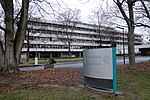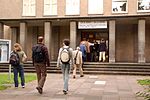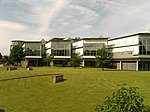New Botanic Garden of Göttingen University
The Neuer Botanischer Garten der Universität Göttingen (36 hectares), also known as the Experimenteller Botanischer Garten, is a research botanical garden maintained by the University of Göttingen. It is located immediately adjacent to the university's Forstbotanischer Garten und Arboretum at Grisebachstraße 1, Göttingen, Lower Saxony, Germany, and open daily without charge. The garden was established by Prof. Heinz Ellenberg (1913–1997) in 1967 as an experimental facility to augment the historic Alter Botanischer Garten der Universität Göttingen. In 2009 its name was changed to the Experimenteller Botanischer Garten. The garden contains special collections of Centaurea and related genera, native flora of Central Europe, holarctic forest vegetation, endangered wild plants, and rare weeds, as well as an alpine garden (5000 m²), wild rose collection, and pond (400 m²) with aquatic and swamp plants.
Excerpt from the Wikipedia article New Botanic Garden of Göttingen University (License: CC BY-SA 3.0, Authors).New Botanic Garden of Göttingen University
Am Bärenberge, Göttingen Nikolausberg
Geographical coordinates (GPS) Address Nearby Places Show on map
Geographical coordinates (GPS)
| Latitude | Longitude |
|---|---|
| N 51.5578 ° | E 9.9623 ° |
Address
Forstbotanischer Garten
Am Bärenberge
37077 Göttingen, Nikolausberg
Lower Saxony, Germany
Open on Google Maps










